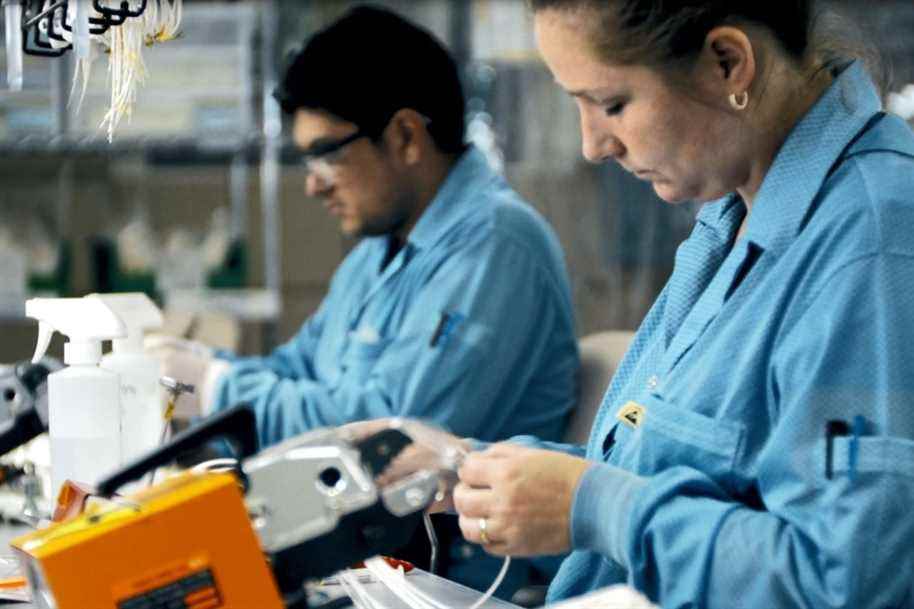Disruptions to the supply chain and the decrease in the number of operations in hospitals due to the COVID-19 pandemic affected last winter the sales of the Quebec company OpSens, specializing in medical instrumentation in cardiology . However, management is optimistic for its spring quarter.
Posted at 11:00 a.m.
CEO Louis Laflamme says he observes an increase in the number of operations and anticipates an increase in revenues for the months of March, April and May compared to the months of December, January and February.
Revenues for December, January and February fell 9% to 8.1 million, and a net loss of 2.4 million was recorded.
After hitting a new 52-week low in early trading on Wednesday, OpSens stock rebounded by midday to end up 8% at $1.94 in Toronto.
At midday precisely, analyst Nicholas Cortellucci, of the firm M Partners, reminded his clients that the last time the context had been “normal”, OpSens had generated revenue growth of around 39 % and 59% for its margins.
I continue to believe that there is an increase in demand for cardiology procedures that will be visible in the second half of the year and in 2023, which should translate into accelerated revenue growth.
Nicholas Cortellucci, analyst at M Partners
OpSens is also still awaiting approvals from Health Canada and the US FDA for its new guidewire designed for aortic valve replacement, a product that will complement its guidewire for the diagnosis and treatment of diseases. coronary.
It would be a matter of weeks for approvals to be obtained, and commercialization could follow quickly, which would open the doors to a market of 600 million, according to analyst Justin Keywood, at Stifel. “OpSens could capture a share of 180 to 360 million. »
The opportunity is interesting for OpSens, whose turnover currently stands at around thirty million.
If approved, the SavvyWire would be the first guidewire capable of delivering the aortic valve prosthesis and allowing continuous pressure measurement during surgery.
Need for manpower
OpSens has also just received more than $2 million in funding to help it develop its next generation of interventional cardiology products.
These funds come from the National Research Council of Canada, INOVAIT, an Ontario funding program that supports the application of artificial intelligence in medical imaging, and Invest-AI, an investment fund led by IVADO Labs , in Montreal, which also supports the use of artificial intelligence.
With its guideline for the diagnosis and treatment of coronary heart disease, OpSens competes with giants such as Philips, Abbott and Boston Scientific.
The financing should notably allow the development of a fourth generation guide wire for the diagnosis and treatment of coronary diseases. “We want to add software to our computer connected to our guideline to better support cardiologists in their decision-making,” said Philippe Gagnon, director of new product development at OpSens, in an interview.

SCREENSHOT THE PRESS
Philippe Gagnon in a remote interview with The Press
“The objective is in particular to improve the robustness of the guide wire at its end for a more optimal performance in cases where patients have several clogged arteries. With this thread, it will be easier to treat one lesion, then go back and treat another lesion, because the thread will remain in good condition. »
Today, it is sometimes necessary to remove the guide wire and use a second one. With the fourth generation guide wire, interventions will be faster and cost less.
Philippe Gagnon, Director of New Product Development at OpSens
OpSens also wants to integrate artificial intelligence into its products and production sites to support the manufacture of optical pressure sensors.
The company manufactures more than 1000 guide wires and 2000 pressure sensors per week.
OpSens would like to hire up to 50 people over the next year to help it achieve its growth goals with its current products. The total workforce now stands at approximately 200 employees, mostly in the Technology Park in Quebec.
Over the past year or so, the research and development team has tripled in size. “We are now 30 and we would like to increase to nearly 40 within a year,” says Philippe Gagnon.
“Our growth depends a lot on our ability to attract quality people in high technology and production to help us achieve our objectives for the next few years. »

